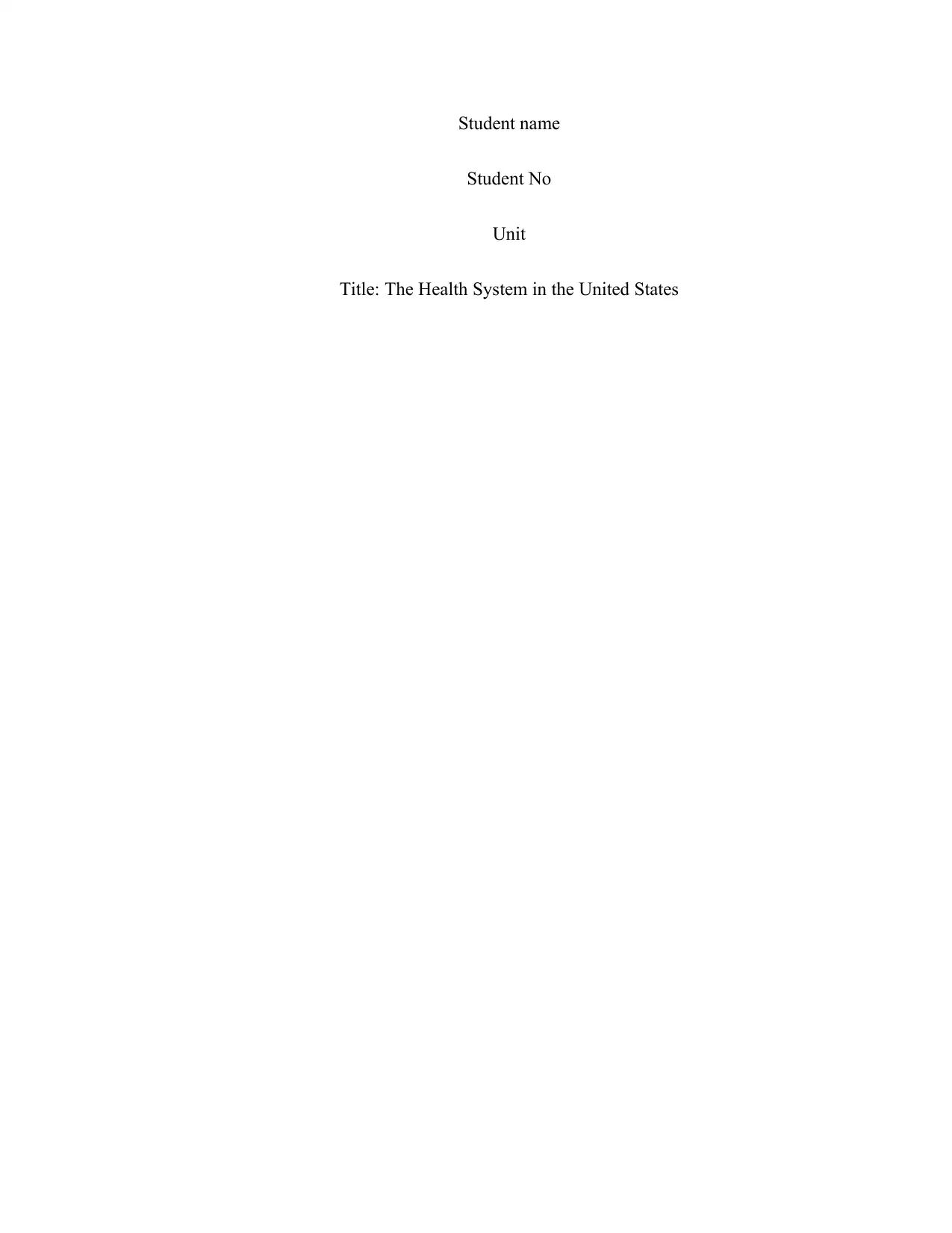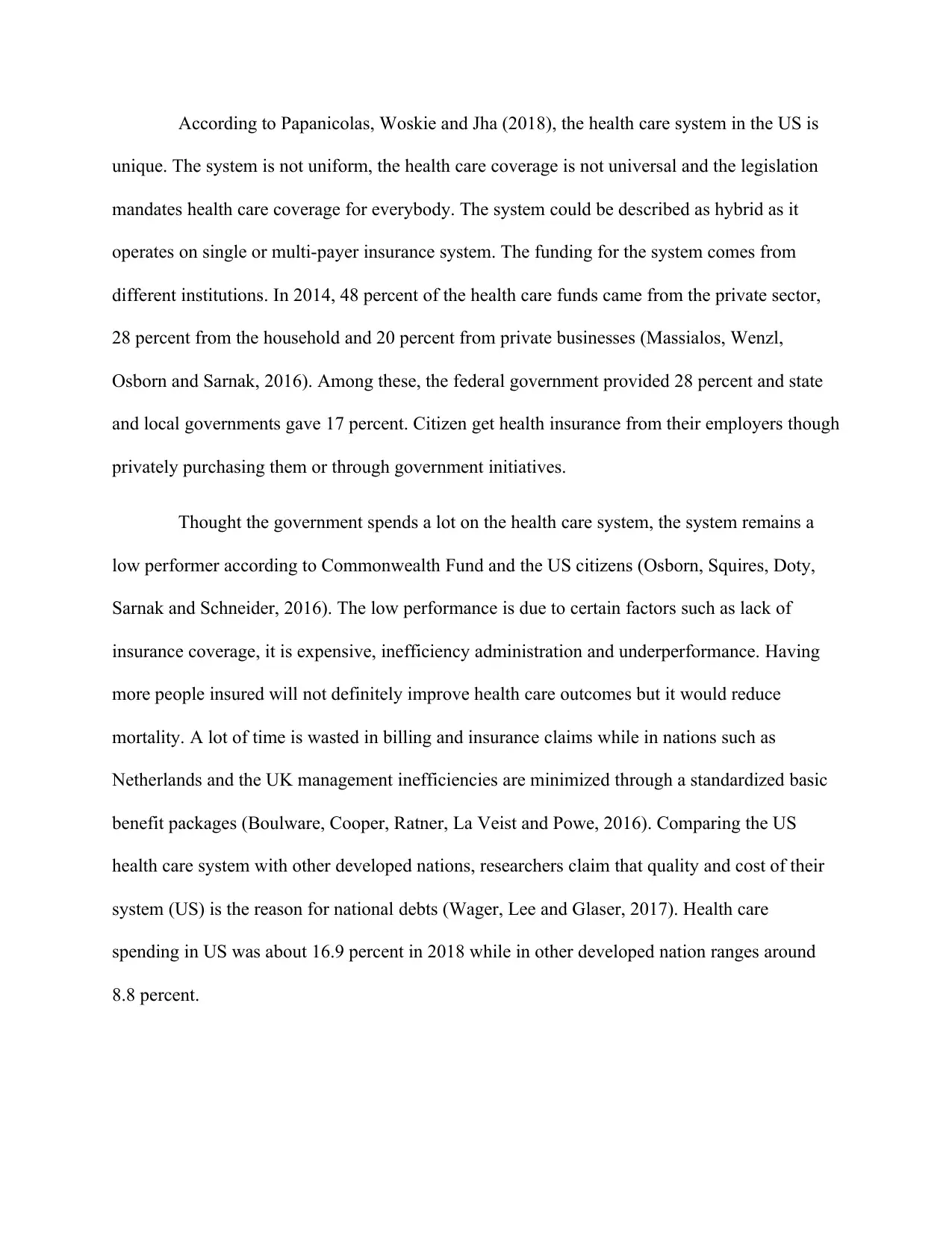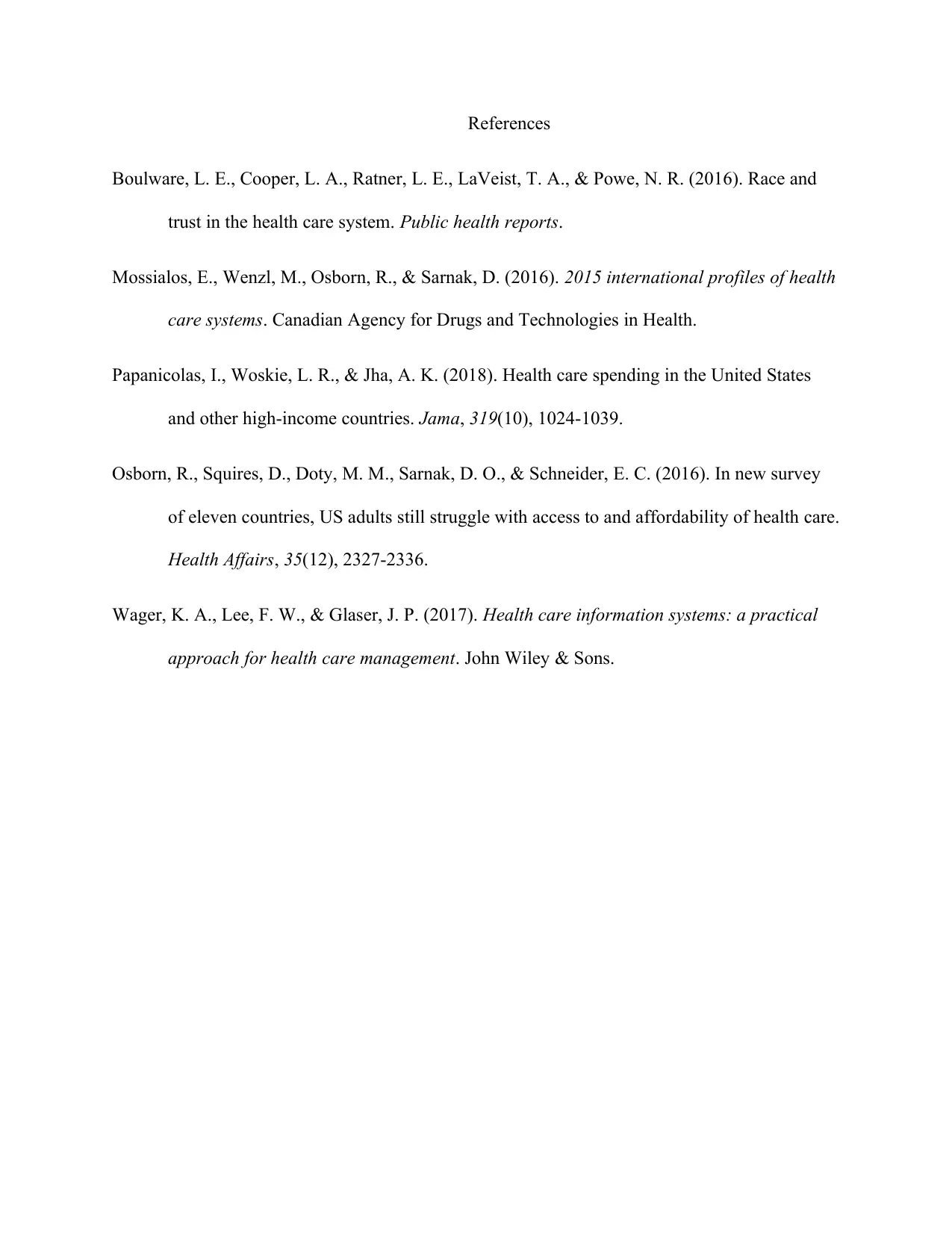Report on the US Healthcare System: Funding, Performance, and Issues
VerifiedAdded on 2022/09/28
|3
|557
|34
Report
AI Summary
This report provides an analysis of the US healthcare system, highlighting its unique characteristics, funding sources, and performance. The report discusses the hybrid nature of the system, which operates on a mix of single and multi-payer insurance models, and the significant financial contributions from both the private and public sectors. It also examines the system's performance in comparison to other developed nations, focusing on issues such as lack of insurance coverage, high costs, administrative inefficiencies, and the impact on mortality rates. The report references several studies and publications to support its findings, comparing the US healthcare system's spending and outcomes with those of other countries. It concludes by emphasizing the need for improvements in areas like insurance coverage, administrative efficiency, and cost-effectiveness to enhance the overall quality of healthcare in the United States.
1 out of 3





![[object Object]](/_next/static/media/star-bottom.7253800d.svg)